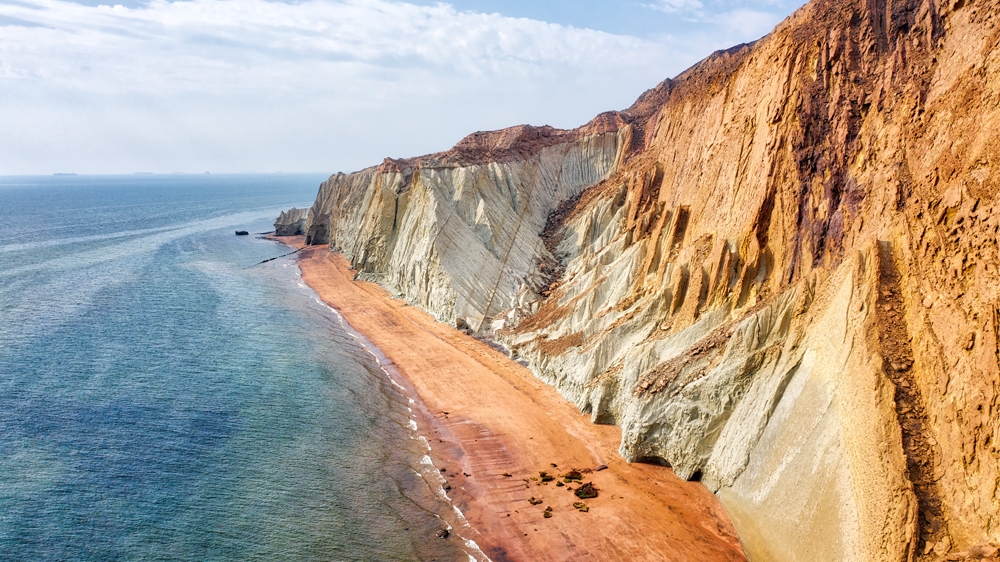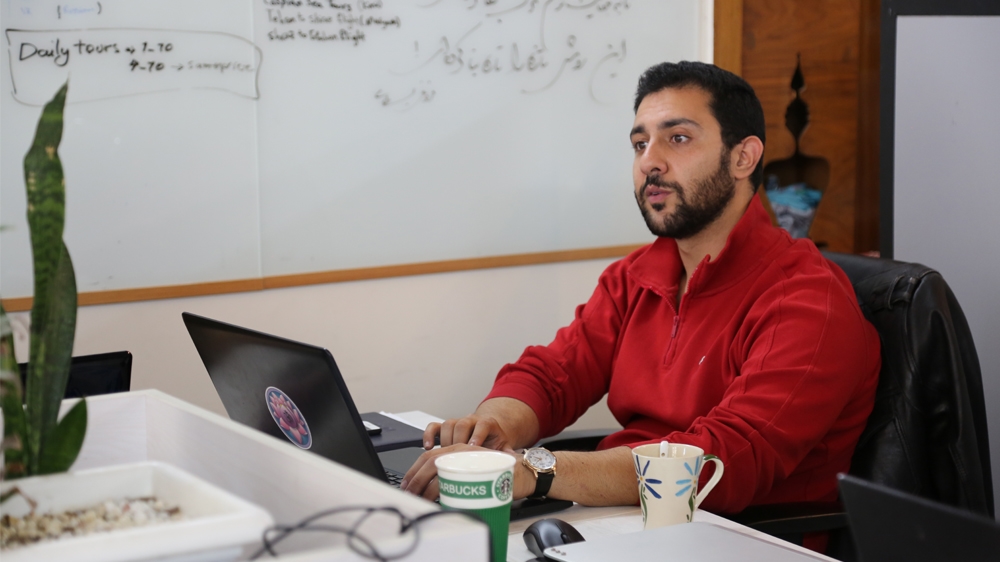Meet the Iranian youth exporting Persian culture to the world
Before travelling to Iran for a week-long tour of the country, Ivan Brezina, 39, from Slovakia avoided sharing his plans with people who haven’t visited the country.
If he did so, he guessed a litany of negative comments would likely ensue: “Iran!? Are you crazy? What are you going to do there? It’ll be dangerous.”
But for Brezina, Iran was a “positive surprise” when he first visited in the 1990s.
He had backpacked for four months across Turkey, Iran, Pakistan and then India to reach his final destination – the Himalayas.
While each country was enjoyable in its own unique way, it was Iran that caught his attention.
“Iran was the best part… It’s wonderful. There aren’t a lot of places [in other countries] where you would be able to enjoy such beauty without crowds of tourists. It’s amazing,” Brezina told Al Jazeera.
The country left a lasting impression on him. Last February, after 20 years, he returned to Iran, this time to tour the country with his wife, Jana.
The couple travelled across the country visiting the ancient cities of Qom, Isfahan, Yazd and Shiraz, stopping along the way to go “snowboarding” in sand dunes, visit a Zoroastrian temple and a salt lake.
 |
| Hormuz Island in the Straight of Hormuz in southern Iran [Lukas Bischoff/Getty Images] |
These sights may be a surprise for many living in the West as Iran is typically portrayed in a negative light as the bogeyman of the Middle East and a dangerous place to visit.
Skiing in the Alborz mountains, bathing in hot springs, and beach vacations in the Gulf usually don’t come to mind when one thinks of Iran.
Luckily there’s a young group of Iranians at a start-up called TAP Persia (Travel Around Persia) in Isfahan who are trying to change these preconceived notions. They’re aware of Iran’s enormous potential for tourism and are working to attract more visitors to see Iran for what it really is.
While the start-up provides tours and services for travellers visiting Iran, their main goal is to change the way people perceive the country by allowing guests to personally connect with Iranian culture through the locals by attending a wedding, a family dinner, or participating in a cooking class.
And when tourists return to their home countries, TAP Persia stays in touch by sending engaging content: information on Iranian culture, literature, food, philosophy.
For the young people working away from their laptops in an office space in Isfahan, Iran’s third-largest city, they don’t see themselves as service providers; they’re “culture exporters”, co-founder Amir Hamidfar, 27, told Al Jazeera.
“No matter where people are in Iran, we want to change their idea about the country, the people and its culture.
“There’s a tornado of negative imagery that’s associated with Iran and we want to counter that,” Hamidfar said.
‘It’s about survival for Iranians’
After living in the US his whole life, Hamidfar, a civil engineer, moved to Iran in 2016 to gain a new world perspective and quickly fell in love with Iranian culture.
Two years ago he joined fellow engineers Hadi Naji, 35, and Rasool Zabihi, 28, to help create the start-up.
In just the first year of business TAP Persia attracted more than 2,000 tourists to the country, just by reaching out through social media.
Its website, they hope, will be used as a base where guests can easily find any information they need on Iran.
They aim to develop tourism through locals. Today, TAP Persia has partnered with about 70 local guides in hand-picked destinations across Iran, promoting sustainable tourism.
 |
| ‘There’s a tornado of negative imagery that’s associated with Iran and we want to counter that,’ Hamidfar says [Al Jazeera] |
After eight years abroad in Malaysia, CEO Naji decided to move back home to launch a business that could help his people, living in difficult economic conditions because of sanctions imposed by Western powers for the past four decades.
|
Iranians angry over new US sanctions on Tehran |
Noticing that tourists often struggle to plan their trip in terms of booking accommodation and tickets as there is no booking platform (international websites such as Booking.com aren’t available in Iran due to US-imposed sanctions), it was clear to Naji there was a gap to fill.
“As an Iranian I can say that we suffered a lot during the sanctions. We can’t communicate with international companies and communities only because the US decided to make very strict sanctions against Iran,” Naji said.
“The US can [implement] strict rules to [curb] businesses for Iranians, but they cannot stop people who want to travel to Iran by themselves individually. They can bring money to our country… It’s about survival for [Iranians].”
Recently Iran has been catching others’ interest as well.
In January the New York Times listed the “Middle East jewel” among the best destinations to visit in 2019.
Despite its perception as a dangerous nation to visit, according to the 2019 Travel Risk Map, Iran is as safe as the UK and Canada when it comes to security threats posed to travellers by political violence.
 |
| Darbandsar Ski Resort located in the Alborz mountains, some 60km north of Tehran [Al Jazeera] |
Trump and the nuclear deal
Iran, home to one of the oldest histories in the world with 23 World Heritage sites, attracts some six million international tourists annually amounting to $3bn in revenue.
By comparison, just across the Gulf, the United Arab Emirates (UAE), a much smaller country with its limited historical heritage, attracted 15.8 million people in 2017, contributing $18.8bn to UAE’s GDP.
Iran had ambitious plans for its tourism industry following the signing of the landmark nuclear deal signed in 2015 by six world powers, after which tourism numbers surged as the trust of tourists, particularly from Western countries, started to increase.
The government had plans of transforming Iran into a tourist hotspot, setting a target of attracting 20 million people annually by 2025.
But the optimism was short-lived as US President Donald Trump withdrew from the nuclear agreement in May 2018 and reinstated sanctions, setting back the progress Iran had made.
It’s why local start-ups such as TAP Persia play a crucial role in providing incomes for families.
“The money goes to people in different villages, cities. It helps them to survive,” Naji said.
“That is my vision – to talk about the real Iran, the people of Iran, and tell the world that we are human like others. We are not terrorists. If [the US] has a problem with our government, all the decisions [the US makes] directly affects ordinary people.”
 |
| Visitors sip tea in the courtyard of the landmark Abbasi Hotel [Wojtek Arciszewski/Al Jazeera] |
Food – easiest point of connection
Despite the regular negative barrage of news reports, this does not reflect the reality of life in Iran, TAP Persia members say.
“It’s really disappointing that whenever people read about Iran, it’s about something bad that happened,” Zabihi said. “Normal life goes on here like anywhere else in the world.”
One way they’re seeking to connect with people worldwide and familiarise them with Iran is through food.
“It’s the easiest point of connection between us and everybody else,” Hamidfar explained over a savoury sandwich ordered from Isfahan’s street food.
Most of the top activities offered on their website are food related such as a dinner party in Yazd with a Zoroastrian family and a Persian picnic out of the city.
 |
| Iranian cuisine [Mehdi Khalili Kolahian/EyeEm] |
“People around the world have different ideas about other people around the world. But every single person in the world loves food and every person eats three times a day,” Hamidfar said.
“So if you want people to connect with your culture, the first thing you should do is connect them with your food. And then naturally they become more curious and want to find out more.”
It’s why Hamidfar has been filming a series of videos on Iranian food to be shown on Youtube, modeling the late celebrity chef Anthony Bourdain’s culinary programmes whichshowed how the world can connect with food.
Iran has a lot to offer – food, stunning architecture and natural wonders – but for Brezina the best part of the country is the “fantastic” people he meets.
For those who try to dissuade him from visiting Iran, Brezina said there’s “not much space for me to convince them”.
“I [say] well, I wish you would know that this country is a wonderful place.”




